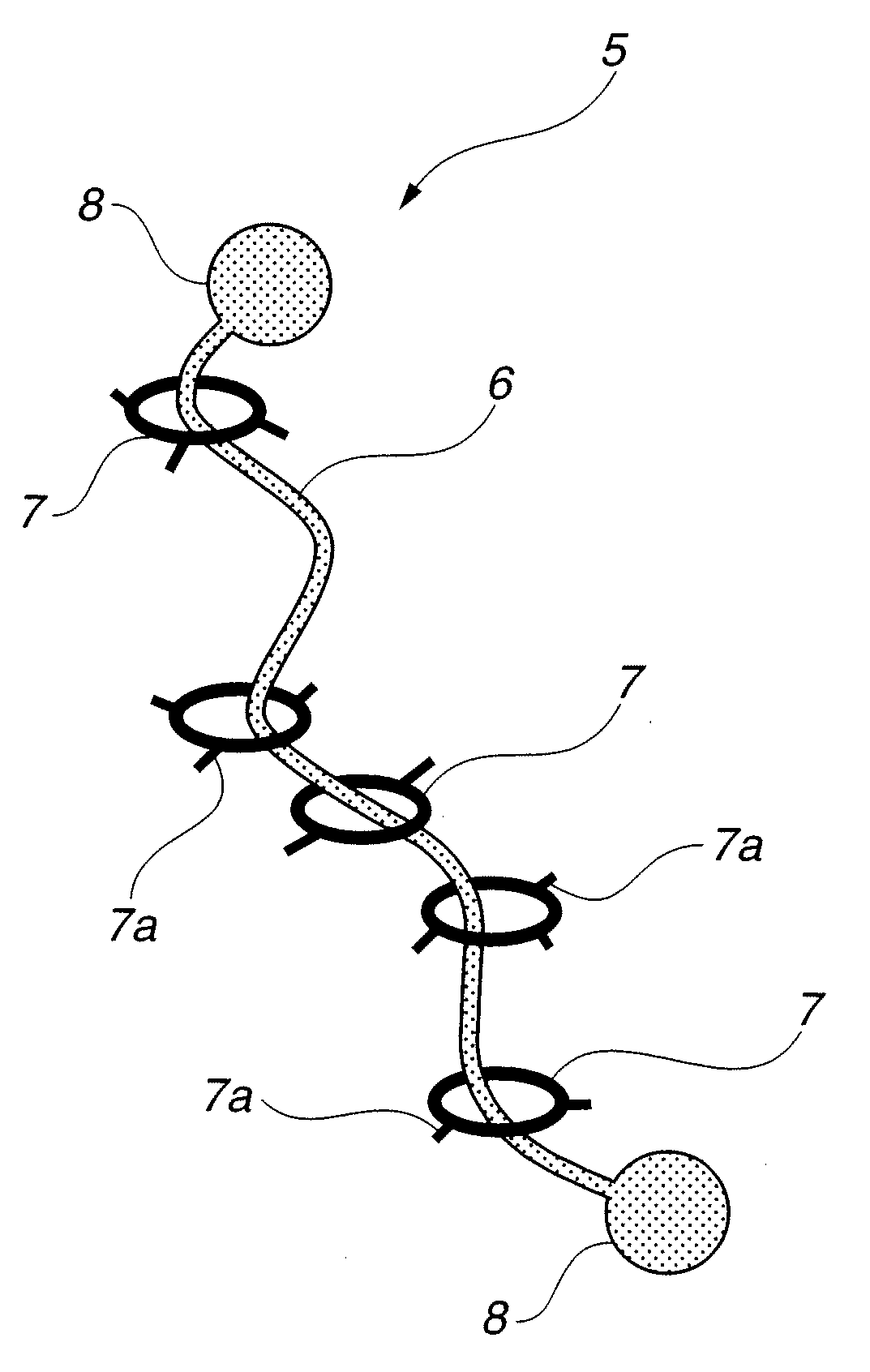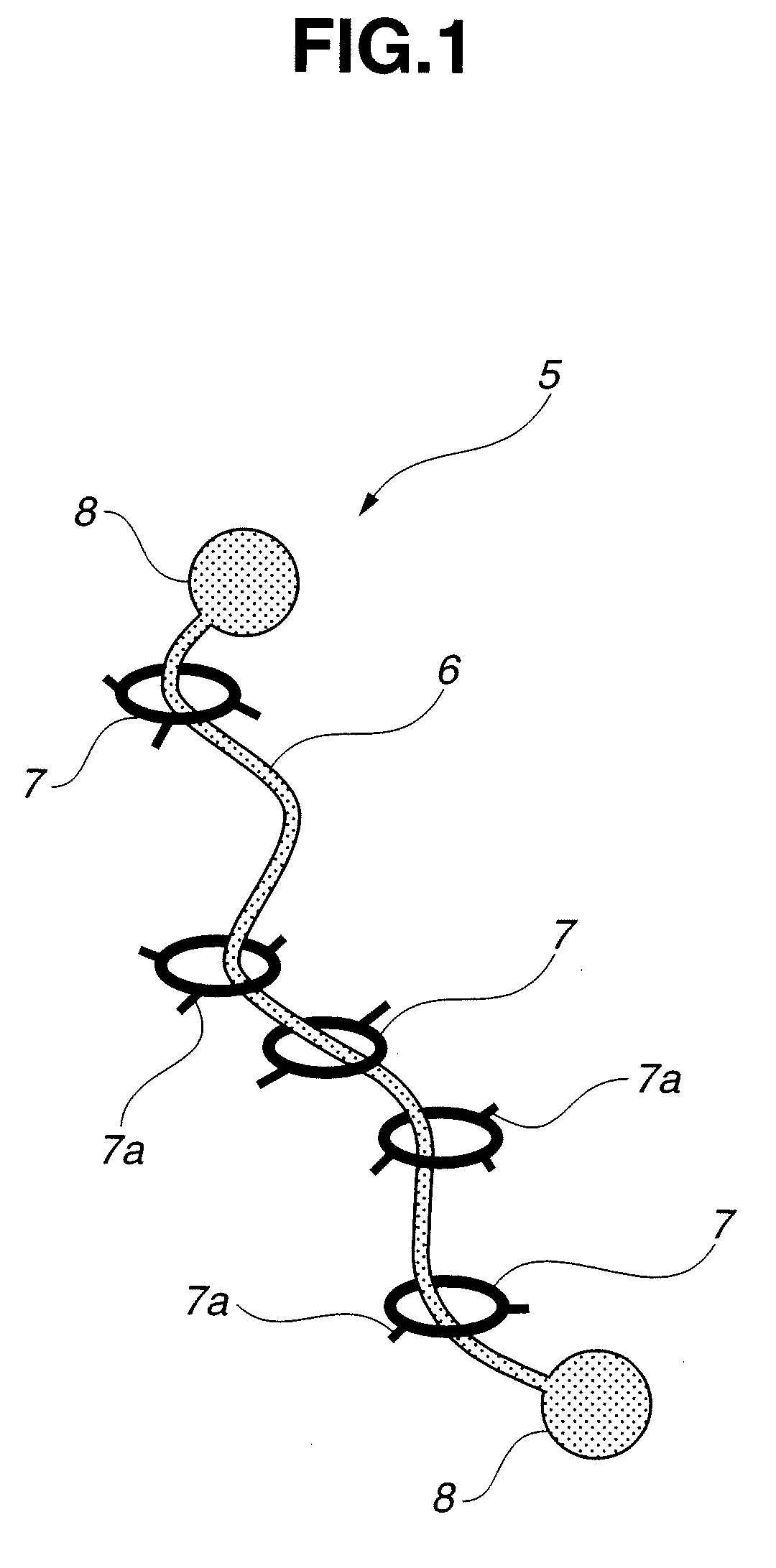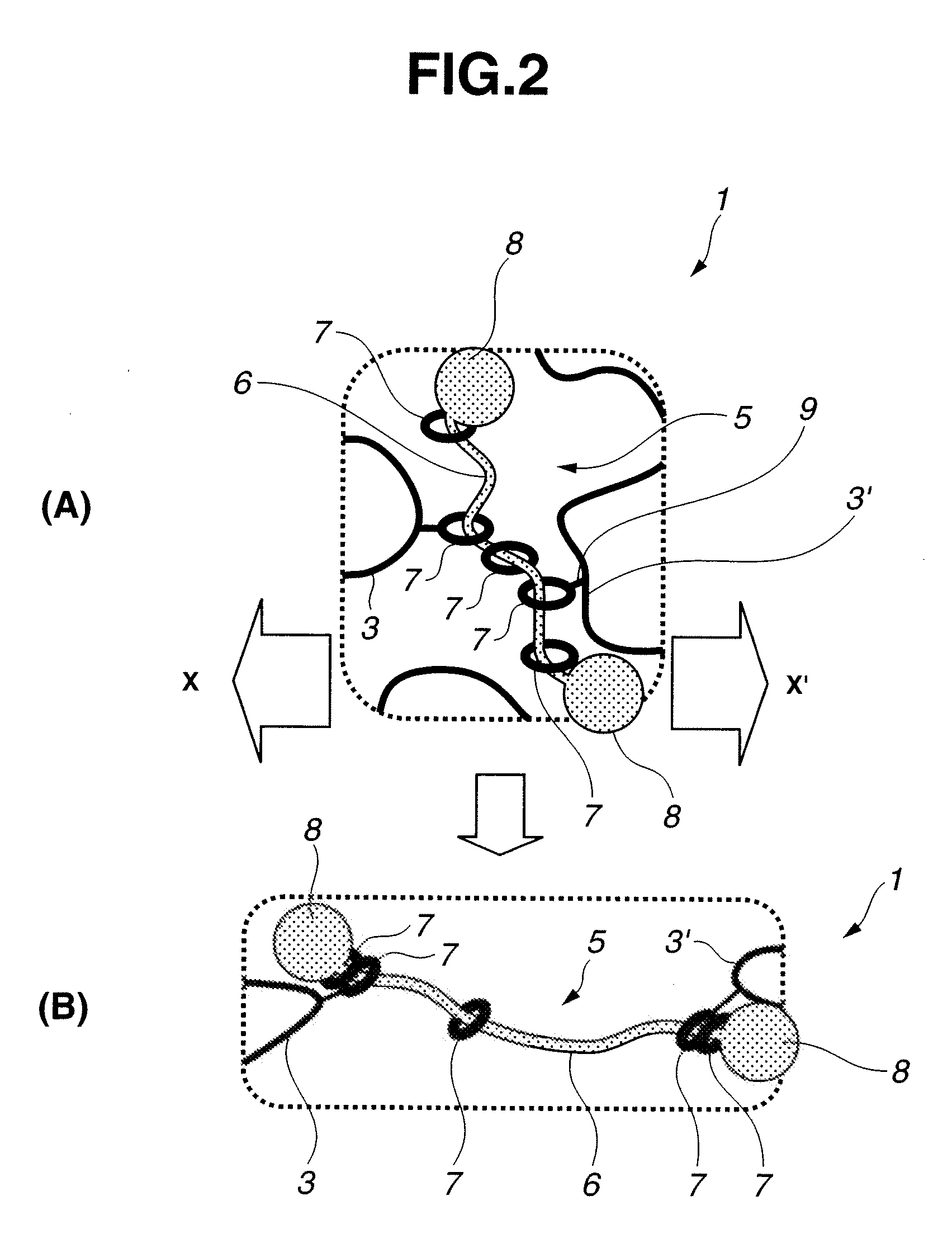Hydrophobic modified polyrotaxane and crosslinked polyrotaxane
a technology of which is applied in the field of hydrophobic modified polyrotaxane and crosslinked polyrotaxane, can solve the problems of low stability against temperature and solvent, and the defect of being remarkably low in mechanical strength
- Summary
- Abstract
- Description
- Claims
- Application Information
AI Technical Summary
Benefits of technology
Problems solved by technology
Method used
Image
Examples
example 1
(1) Preparation of PEG-Carboxylic Acid by TEMPO Oxidation of PEG
[0110]Polyethylene glycol (PEG) (molecular weight: 5000) in an amount of 10 g, 100 mg of TEMPO (2,2,6,6-tetramethyl-1-piperidinyl-oxy radical) and 1 g of sodium bromide were dissolved in 100 ml of water. An aqueous solution of commercially available sodium hypochlorite (available chlorine concentration: 5%) in amount of 5 ml was added and stirred at room temperature for 10 minutes. In order to decompose excessive sodium hypochlorite, ethanol was added to an extent of 5 ml in maximum so as to terminate the reaction.
[0111]An extraction using 50 ml of methylene chloride was repeated three times thereby to extract components other than inorganic salts. Thereafter, methylene chloride was distilled out from the extracted components by an evaporator. Then, the components were dissolved in warm ethanol and then allowed to stand in a freezer (−4° C.) overnight thereby extracting only PEG-carboxylic acid, followed by recovering a...
example 2
(1) Preparation of PEG-Carboxylic Acid by TEMPO Oxidation of PEG
[0122]Polyethylene glycol (PEG) (molecular weight: 5000) in an amount of 10 g, 100 mg of TEMPO (2,2,6,6-tetramethyl-1-piperidinyl-oxy radical) and 1 g of sodium bromide were dissolved in 100 ml of water. An aqueous solution of commercially available sodium hypochlorite (available chlorine concentration: 5%) in amount of 5 ml was added and stirred at room temperature for 10 minutes. In order to decompose excessive sodium hypochlorite, ethanol was added to an extent of 5 ml in maximum so as to terminate the reaction.
[0123]An extraction using 50 ml of methylene chloride was repeated three times thereby to extract components other than inorganic salts. Thereafter, methylene chloride was distilled out from the extracted components by an evaporator. Then, the components were dissolved in warm ethanol and then allowed to stand in a freezer (−4° C.) overnight thereby extracting only PEG-carboxylic acid, followed by recovering a...
example 3
(1) Preparation of PEG-Carboxylic Acid by TEMPO Oxidation of PEG
[0133]Polyethylene glycol (PEG) (molecular weight: 100,000) in an amount of 10 g, 100 mg of TEMPO (2,2,6,6-tetramethyl-1-piperidinyl-oxy radical) and 1 g of sodium bromide were dissolved in 100 ml of water. An aqueous solution of commercially available sodium hypochlorite (available chlorine concentration: 5%) in amount of 5 ml was added and stirred at room temperature for 10 minutes. In order to decompose excessive sodium hypochlorite, ethanol was added to an extent of 5 ml in maximum so as to terminate the reaction.
[0134]An extraction using 50 ml of methylene chloride was repeated three times thereby to extract components other than inorganic salts. Thereafter, methylene chloride was distilled out from the extracted components by an evaporator. Then, the components were dissolved in warm ethanol and then allowed to stand in a freezer (−4° C.) overnight thereby extracting only PEG-carboxylic acid, followed by recoverin...
PUM
| Property | Measurement | Unit |
|---|---|---|
| Molecular weight | aaaaa | aaaaa |
| Hydrophobicity | aaaaa | aaaaa |
Abstract
Description
Claims
Application Information
 Login to View More
Login to View More - R&D
- Intellectual Property
- Life Sciences
- Materials
- Tech Scout
- Unparalleled Data Quality
- Higher Quality Content
- 60% Fewer Hallucinations
Browse by: Latest US Patents, China's latest patents, Technical Efficacy Thesaurus, Application Domain, Technology Topic, Popular Technical Reports.
© 2025 PatSnap. All rights reserved.Legal|Privacy policy|Modern Slavery Act Transparency Statement|Sitemap|About US| Contact US: help@patsnap.com



